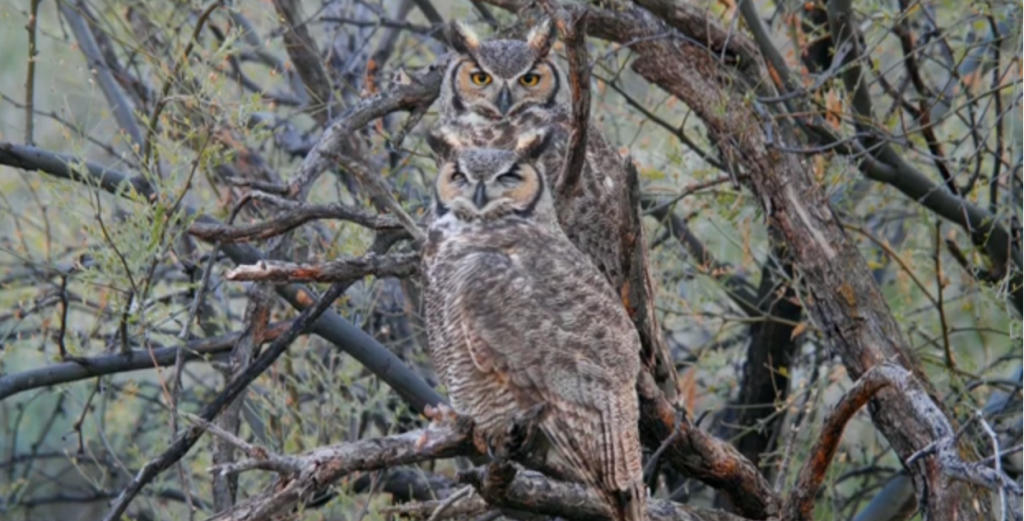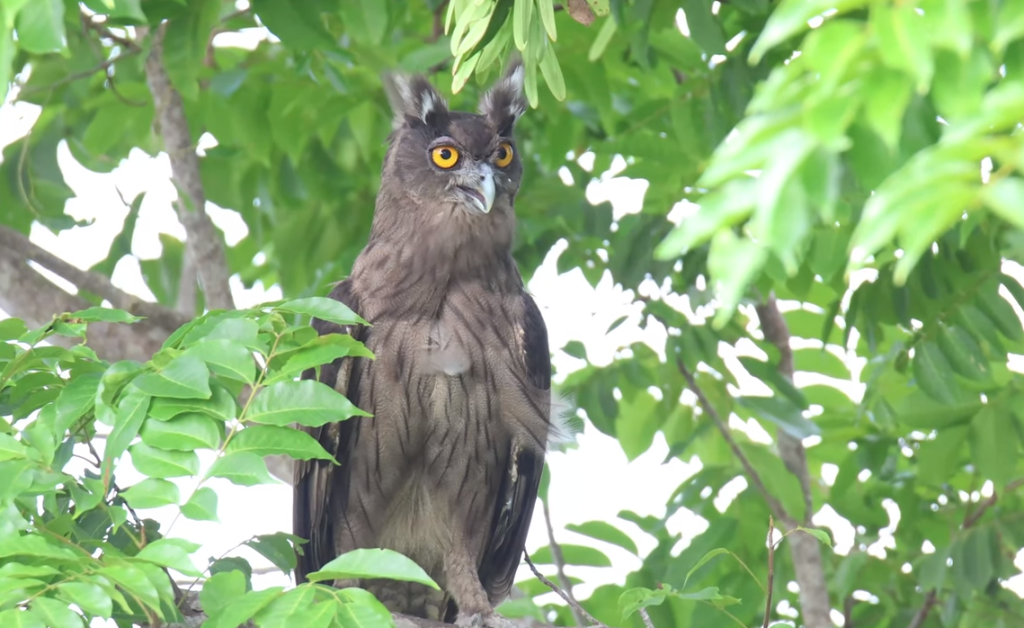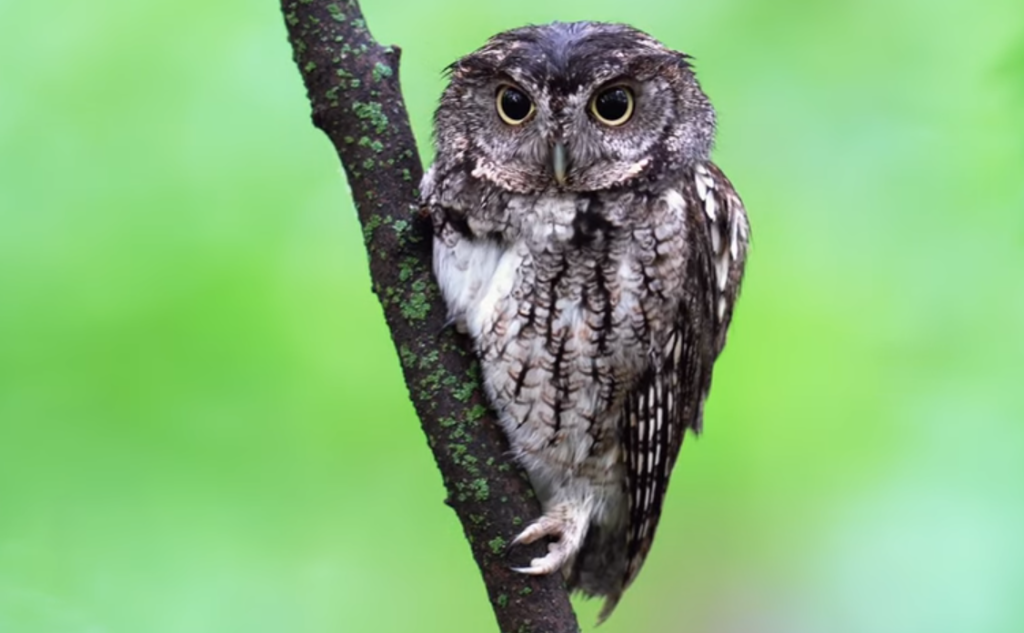Do great horned owls mate for life? The answer to this intriguing question is both fascinating and complex. Great horned owls are known for their long-term partnerships, often remaining loyal to a single mate throughout their lives.
These magnificent birds of prey demonstrate remarkable dedication in nurturing their families and establishing strong bonds with their lifelong partners.
In this article, we will delve into the intricate world of great horned owl relationships, exploring the factors that contribute to their monogamous behavior and shedding light on the challenges they face in maintaining a lasting partnership.
Do Great Horned Owls Mate for Life?
Great Horned Owls are generally monogamous, meaning that they mate for life. However, there are some exceptions to this rule. For example, if one of the owls in a pair dies, the other owl may find a new mate.
Great Horned Owls typically start courting in the fall, around October. The male owl will do a courtship display, which includes hooting, wing flapping, and head bobbing. If the female owl is receptive, she will also hoot and bob her head.
If the pair mates, they will usually stay together for the rest of the breeding season. The female owl will lay 2-4 eggs, which will hatch after about 30 days.
The male and female owl will both take turns incubating the eggs and feeding the young owlets.
Great Horned Owls can live for up to 20 years in the wild. If a pair of Great Horned Owls stays together for their entire lifespan, they can raise up to 20 owlets.
Habitat and Distribution
Great horned owls are widely distributed across North America, from Alaska and Canada to the southern United States. They can also be found in parts of Central America and even in some regions of South America.
Here are some key points about their habitat and distribution:
- Range: Great horned owls have one of the most extensive ranges among all owl species. They inhabit a variety of ecosystems, including forests, woodlands, deserts, mountains, plains, swamps, and urban areas.
- Habitat: These adaptable birds can thrive in diverse habitats due to their versatile hunting skills and ability to nest in various locations. Their preferred habitats include mixed forests with open areas for hunting or perching on tree branches.
- Territoriality: Great horned owls have large territories that they defend year-round against other owls and potential predators.
- Nesting Sites: They typically nest high up in trees but may also use abandoned nests built by other birds or occupy cavities in cliffs or buildings.
- Urban Adaptation: In addition to natural environments, great horned owls often adapt well to urban settings with suitable habitat elements such as parks, golf courses, cemeteries, or large gardens that provide sufficient prey opportunities.
- Migration Patterns: While great horned owls are generally sedentary (non-migratory), there may be some local movements within their range depending on food availability or environmental conditions.
- Climate Influence: The presence of great horned owls is influenced by climate factors like temperature extremes; however they demonstrate resilience by enduring cold winters as well as hot summers throughout their range.
How Many Partners Do Owls Have?
As a general rule, owls are monogamous, meaning that they mate for life. This is true for most owl species, including great horned owls. However, there are some exceptions to this rule.

For example, some owls may only mate for a few years before finding a new partner. Additionally, there have been a few cases of owls practicing polygyny, which is when one male mates with multiple females.
How to Tell the Difference Between a Male and Female Great Horned Owl?
Here is a table summarizing the differences between male and female great horned owls:
| Feature | Male | Female |
|---|---|---|
| Size | Larger | Smaller |
| Call | Deep, hooting sound | Higher-pitched whinnying sound |
| Coloration | More brown | More gray |
| Brow ridge | More prominent | Less prominent |
What Color Is male Great Horned Owl?
Male great horned owls are typically dark brown with a white heart-shaped patch on their chest. They also have a prominent brow ridge and a dark mask around their eyes. Their underbelly is lighter brown with some white streaks.
What Color Is a Female Great Horned Owl?
Female great horned owls are typically grayish brown with a white throat patch. They also have a prominent brow ridge and a dark mask around their eyes. Their underbelly is lighter brown with some white streaks.
What Is the Lifespan of A Great Horned Owl?
The lifespan of a great horned owl in the wild is typically around 13-15 years. However, there have been reports of great horned owls living for up to 20 years or more in captivity.

The oldest known great horned owl was a female who lived to be 50 years old in captivity. Great horned owls are most vulnerable in their early stages of life.
Great Horned Owl Nest
Great horned owls do not build their own nests. They typically take over the nests of other large birds, such as hawks, crows, or herons. They may also nest in cavities in trees, on cliffs, or in buildings.
The nest is typically lined with leaves, grass, fur, or feathers. Great horned owls typically lay 2-4 eggs per clutch. The eggs are white and about 2 inches in diameter. The female great horned owl incubates the eggs for about 30 days.
The young owls (also known as owlets) fledge from the nest at about 6 weeks old. Great horned owls are cavity nesters, which means they use existing holes in trees or other structures to build their nests.
Baby and Juvenile Great Horned Owls
Baby great horned owls (also known as owlets) are born naked and blind.
Juvenile great horned owls are still quite small when they fledge (leave the nest) at about 6 weeks old.
Mating Behavior of Great Horned Owls
- Great horned owls are known for their strong pair bonds and often mate for life.
- They typically form monogamous relationships, staying with the same partner throughout their lives.
- The mating season for great horned owls usually begins in late winter or early spring.
- During this time, males will start attracting females by hooting and calling out to establish territories and attract a mate.
- Once a pair has formed, they engage in courtship displays that include mutual preening, bill rubbing, and talon clasping.
- These displays strengthen the bond between the male and female owl while also affirming their commitment to each other.

Factors that Influence Mating Habits
Mating habits of Great Horned Owls can be influenced by various factors. Here are some key factors that play a role in their mating behavior:
- Territory: The availability and quality of suitable nesting territories greatly impact the mating habits of Great Horned Owls. They tend to establish long-term territories, which they defend vigorously against intruders.
- Food Availability: Adequate food resources play a crucial role in determining the breeding success and timing for Great Horned Owls. A plentiful supply of prey such as small mammals, birds, reptiles, and insects is necessary to support both the adults during courtship and incubation periods, as well as their offspring.
- Climate and Seasonality: The timing of mate selection and courtship behaviors among Great Horned Owls is often dictated by seasonal changes in weather conditions and resource availability. In regions with distinct seasons, owls may time their breeding efforts to coincide with periods when resources are most abundant.
- Age and Experience: Age can influence the mating behavior of these owls; older individuals often have higher chances of successful pair bonding compared to younger ones. Experienced adults also exhibit better parenting skills during incubation, brooding, and feeding processes.
- Social Structure: Social interactions within owl populations can impact mating patterns. Some studies suggest that pairs will remain monogamous throughout their lives; however, instances such as divorce or polygamy have been observed under certain circumstances within this species.
- Predator Pressure: Predators pose a threat to potential mates or nesting sites for Great Horned Owls; therefore, they carefully select safe areas away from predators’ reach while choosing a partner or establishing nests.
Common Misconceptions about Owl Mating
There are several misconceptions surrounding the mating behavior of great horned owls. Let’s debunk some of these myths:
1. Myth: Great horned owls mate for life
- Contrary to popular belief, great horned owls do not necessarily mate for life. While they can form long-lasting pair bonds, they are known to switch mates if necessary.
2. Myth: Owls only have one partner throughout their lives
- Great horned owls are not monogamous creatures that stick with a single partner forever. They display flexibility in their mating habits and may choose new partners under certain circumstances.
3. Misconception: Divorce is uncommon among owl pairs
- In reality, divorce or separation between owl pairs is not unusual. Factors such as the death of a mate or changes in territory availability can lead to the dissolution of existing pair bonds.
4. Misunderstanding: Male and female owls always stay together
- While it is true that male and female great horned owls often engage in joint activities like hunting and nesting, they also spend time apart during non-breeding seasons.
5. Incorrect Belief: Owls raise their chicks together until adulthood
- Although both parents share responsibilities during nesting season, once the chicks become independent enough to leave the nest, they will typically disperse on their own without further assistance from their parents.
6. Fallacy: Pairs remain faithful even when physically separated
- When one member of an owl pair migrates while the other remains in its breeding range, there is no evidence suggesting that fidelity persists during this period of separation.
Watch Video: Do Great Horned Owls Mate for Life?
Conclusion! Do Great Horned Owls Mate for Life?
Great horned owls are known to exhibit strong pair bonding and often mate for life. This remarkable behavior is characterized by the loyalty and commitment these owls show towards their partners.
Mating for life allows great horned owl couples to establish a stable partnership that lasts throughout the breeding season and beyond.
By remaining together year after year, they can successfully raise multiple generations of offspring within the same territory.
This continuity provides them with a better chance of passing on their genes and ensuring the survival of their species.
FAQs
Do Great Horned Owls Mate for Life?
Yes, great horned owls are known to be monogamous birds, which means they typically mate for life. Once a male and female owl find each other, they form a bond and remain together as a pair for several years.
How Do Great Horned Owls Choose Their Mates?
Great horned owls choose their mates through a courtship process. The male owl will perform elaborate flight displays, such as soaring and diving, to attract the female. Additionally, they engage in vocalizations and other territorial displays to demonstrate their fitness as potential partners.
At What Age Do Great Horned Owls Start to Breed?
Great horned owls typically reach sexual maturity and start breeding at around two years of age. By this time, they have established territories and are ready to find a mate.
How Long Do Great Horned Owl Pairs Stay Together?
Great horned owl pairs often remain together for multiple breeding seasons, and sometimes for life. However, if one partner dies or fails to return to the territory, the surviving owl may find a new mate.
Do Great Horned Owls Stay Together Year-Round?
Great horned owls are generally solitary birds outside of the breeding season. While they may share a territory, they often roost and hunt separately. However, during breeding, they maintain closer proximity and actively engage in parenting together.
How Do Great Horned Owl Pairs Communicate with Each Other?
Great horned owl pairs communicate with a variety of vocalizations. Hooting is the most recognizable sound and is often used for territory defense and pair bonding. They also use soft calls and hooting duets to strengthen their bond and coordinate activities.
Do Great Horned Owls Build Nests Together?
Great horned owls do not build nests together. Instead, they use existing nests made by other birds or squirrels. They may also use tree cavities, rocky ledges, or abandoned structures as nesting sites.




